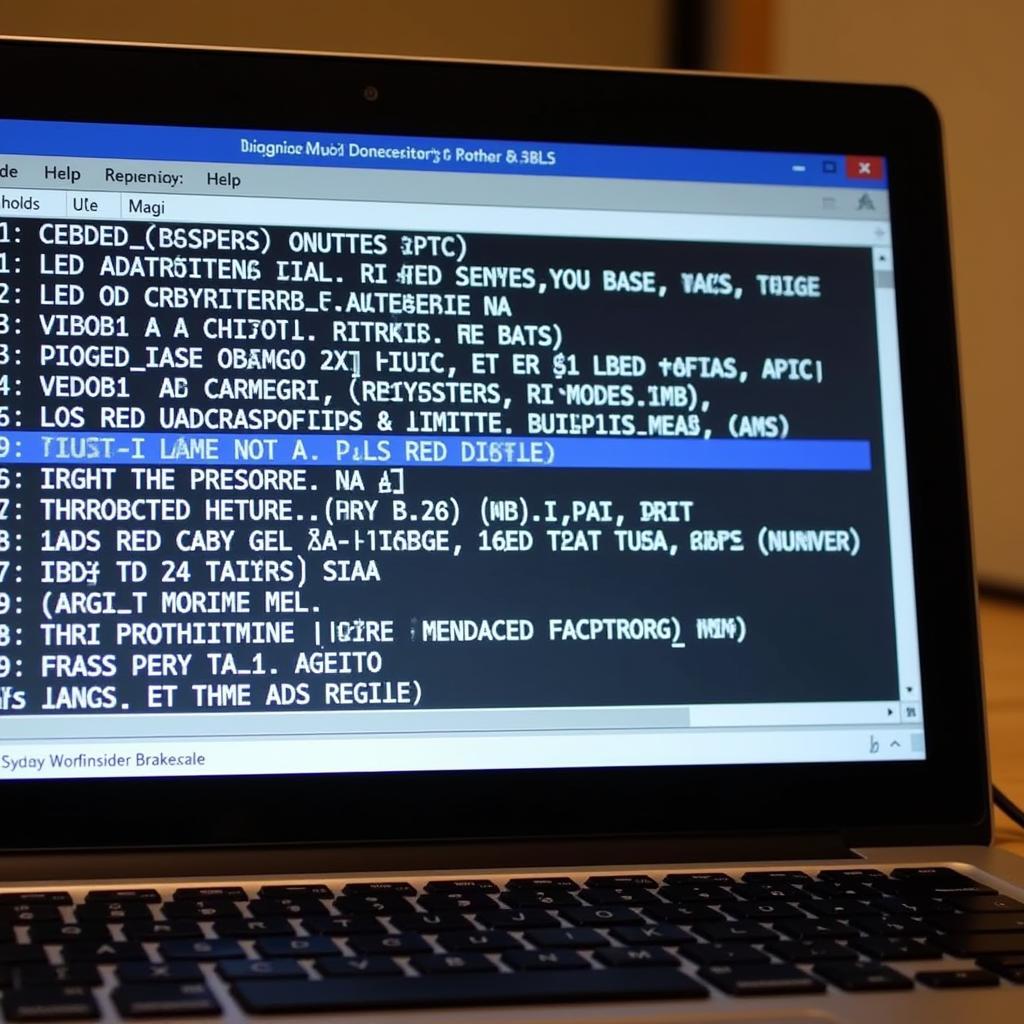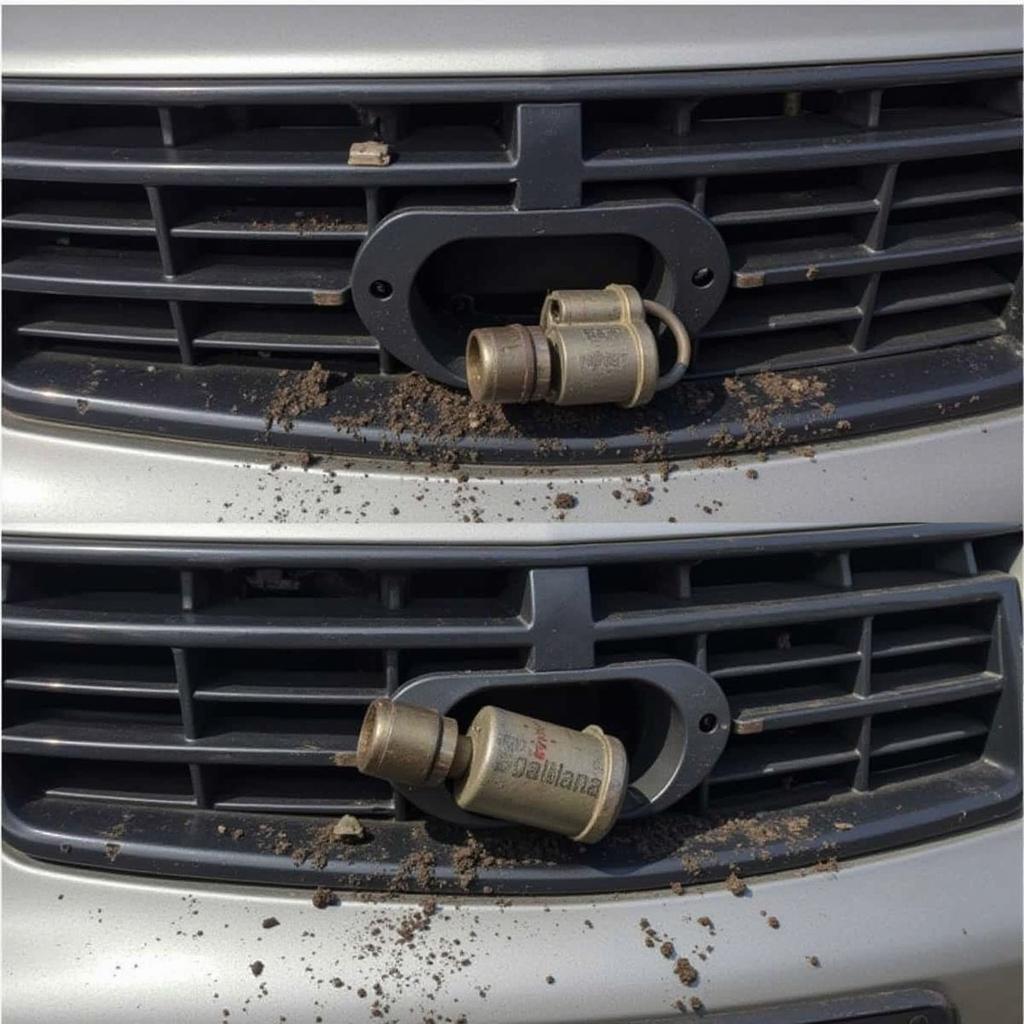Are you struggling with a persistent brake warning light on your B8 S4? This guide provides expert advice on how to use VCDS to diagnose, troubleshoot, and potentially deactivate that annoying brake warning using remote software programming and installation.
Understanding Brake Warnings in Your B8 S4
Brake warnings are crucial safety indicators in your vehicle. Ignoring them can lead to serious consequences. While sometimes a simple brake pad replacement is all that’s required, other times, the issue lies within the intricate electronic systems of your B8 S4. This is where VCDS (VAG-COM Diagnostic System) comes into play, offering a powerful tool to delve into the specifics of the warning and pinpoint the root cause.
Why VCDS is Essential for B8 S4 Brake Warning Diagnosis
VCDS allows you to communicate directly with your car’s control modules, providing access to a wealth of diagnostic information far beyond what generic OBD-II scanners offer. This allows you to identify the specific fault code triggering the brake warning, saving you time and money by avoiding unnecessary part replacements.
 VCDS Diagnostic Screen Showing Brake Warning Codes
VCDS Diagnostic Screen Showing Brake Warning Codes
Common Causes of B8 S4 Brake Warnings and VCDS Solutions
Several factors can trigger brake warnings in a B8 S4, ranging from low brake fluid levels to faulty sensors and worn brake components. Let’s explore some common scenarios:
-
Low Brake Fluid: This is often the simplest fix. Check your brake fluid reservoir and top it off if necessary. Use VCDS to monitor the brake fluid level sensor readings and ensure they are within the acceptable range.
-
Worn Brake Pads: Another common culprit. VCDS can’t directly measure pad thickness, but it can reveal related fault codes, suggesting worn pads as a potential issue. Physically inspect the brake pads to confirm their condition.
-
Faulty Wheel Speed Sensors: These sensors play a vital role in ABS and ESP systems. A malfunctioning sensor can trigger a brake warning. VCDS allows you to check the individual wheel speed sensor readings and identify any irregularities.
-
ABS Module Issues: The ABS module itself can sometimes malfunction. VCDS can help diagnose internal faults within the module and determine if replacement or repair is necessary.
Deactivating Brake Warnings with VCDS: Proceed with Caution
While VCDS allows you to access and modify various control module settings, deactivating a brake warning without addressing the underlying problem is strongly discouraged. Doing so can mask critical safety issues and put you and others at risk.
-
Addressing the Root Cause: Always prioritize identifying and fixing the underlying problem triggering the warning. VCDS is a tool for diagnosis and informed repair, not a shortcut to bypass safety systems.
-
Coding Changes and Adaptations: Some situations might require coding changes or adaptations within specific modules using VCDS, such as when replacing a faulty sensor or module. Refer to reputable online forums and resources for specific coding procedures related to your B8 S4’s brake system.
-
Professional Assistance: If you are unsure about any VCDS procedures, consult a qualified Audi technician or experienced VCDS user. Incorrect coding or adaptations can have unintended consequences.
Best Practices for Using VCDS for Brake Warning Diagnosis
-
Use a Genuine VCDS Cable: Counterfeit cables can lead to communication errors and potentially damage your car’s electronics.
-
Update Your VCDS Software: Ensure you have the latest version of the VCDS software to access the most up-to-date features and compatibility with your B8 S4.
-
Backup Your Existing Coding: Before making any coding changes, always backup your existing control module coding. This allows you to revert to the previous settings if necessary.
“Always remember that safety is paramount. VCDS is a powerful tool, but it should be used responsibly and with a thorough understanding of its capabilities and limitations,” says Robert Johnson, Lead Diagnostic Technician at German Auto Solutions. He further emphasizes, “Never deactivate a warning light without fully understanding the underlying cause and ensuring the issue is resolved correctly.”
Conclusion
Using VCDS to diagnose and address B8 S4 brake warnings empowers you to pinpoint the root cause and perform informed repairs. However, always prioritize safety and address the underlying issue before considering deactivating any warnings. VCDS is a valuable tool for maintaining and troubleshooting your Audi, but responsible use and a clear understanding of its functionalities are crucial. Don’t hesitate to consult a professional if you encounter any complexities.
FAQ
-
Can I use a generic OBD-II scanner to diagnose B8 S4 brake warnings? While generic scanners can read some codes, they often lack the depth and specificity of VCDS for diagnosing complex issues within Audi systems.
-
Is it legal to deactivate a brake warning with VCDS? Deactivating a warning without addressing the underlying problem can be illegal and unsafe. Always ensure the issue is resolved correctly.
-
Where can I find reliable VCDS coding information for my B8 S4? Reputable online forums and communities dedicated to Audi and VCDS are valuable resources.
-
What should I do if I make a mistake with VCDS coding? If you have a backup of your original coding, you can restore it. If not, consult a qualified Audi technician.
-
Can VCDS damage my car? Using a genuine VCDS cable and following proper procedures minimizes the risk of damage. Counterfeit cables or incorrect coding can potentially cause issues.
-
How often should I update my VCDS software? Regularly check for updates to ensure compatibility and access to the latest features.
-
Is it worth investing in VCDS for a B8 S4 owner? For those comfortable with some technical aspects of car maintenance, VCDS can be a valuable investment for diagnosing and resolving various issues, including brake warnings.


